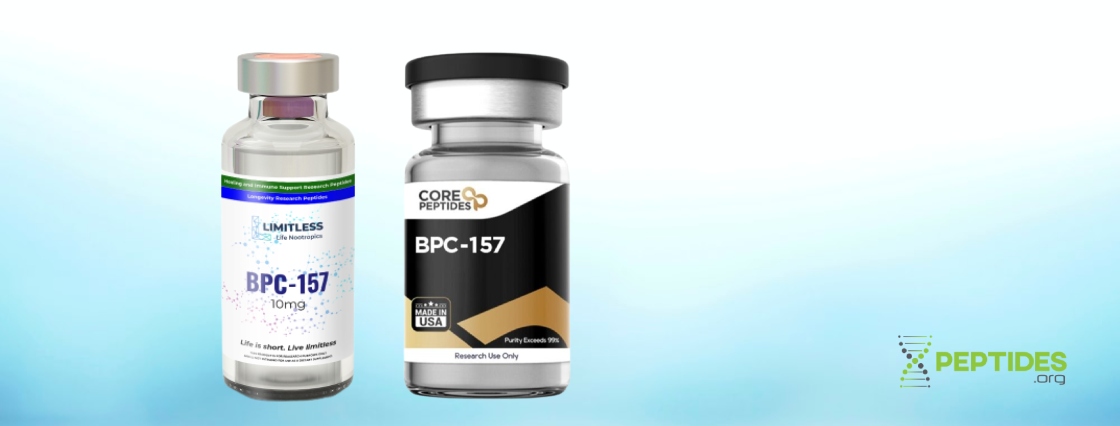
August 27, 2024
Brain-gut Axis And Pentadecapeptide Bpc 157: Academic And Practical Implications
Bpc-157 Generalized edema and congestion (a, b, c, d) with an enhanced variety of karyopyknotic cells were located in the cerebral cortex (a, b) that was considerably different from the cortex area in BPC 157-treated rats (A, B). In control rats, intracerebral hemorrhage was located in infratentorial space (d), mostly in cerebellopontine angle/area (c) with generalised edema and blockage of main nervous system, while no hemorrhage (C) and only moderate edema was found in treated animals, mostly at 50 mmHg intra-abdominal stress (D). ( HE; magnification × 200, range bar 100 μm (a, A, b, B, d, D); magnification × 100, range bar 200 μm (c, C)). Body-protective substance (BPC) 157 demonstrates safety effects versus damage to numerous body organs and cells. For future medical applications, we had actually previously established a solid-phase synthesis procedure for BPC157, validated its biological activity in various wound versions, and completed preclinical security evaluations. This research study intended to check out the pharmacokinetics, discharging, metabolism, and distribution accounts of BPC157.Scientific Assessments
When taken orally or systemically at healing dosages, BPC-157 revealed an excellent safety record. BPC-157's anti-inflammatory residential properties might additionally add to its anti-tumor impacts. Chronic swelling is a well-known threat aspect for cancer cells progression, so minimizing inflammation could possibly inhibit lump growth. There is some proof to recommend that BPC-157 may boost cognitive function, particularly in the context of brain injuries or neurodegenerative conditions. This could be due to its neuroprotective results and capability to promote neural regeneration.BPC-157 and TB-500: Inflammation, Tissue Damage, and More - The Portugal News
BPC-157 and TB-500: Inflammation, Tissue Damage, and More.
Posted: Tue, 19 Sep 2023 07:00:00 GMT [source]

The Fda's Setting On Bpc 157
The pharmacokinetic parameters were calculated making use of the mean concentration and Watson LIMS software application according to the non-atrioventricular design. Likely, BPC 157 shows some desirable effects for esophagogastric anastomosis recovery. Together, intestinal tract anastomosis [10-14] and fistulas [15-20] healing, esophagitis and stomach lesion recovery, alongside with saved sphincter feature [10,11,17,18,20-25] can certainly boost the feasible medicinal peptides therapy for rat esophagogastric anastomosis. Previously, only to boost anastomosis recovery, checked were keratinocyte growth factor-2 (KGF-2) (shown to be inadequate provided intraperitoneally) [26] (no matter to restorative efficacy of a mutant of KGF-2 on trinitrobenzene sulfonic acid-induced rat design of Crohn's disease [27] and FGF-beta (efficient given topically [28].Information Availability Statement
The effective dosage of BPC157 for the treatment of numerous injuries in mice, rats, and more info bunnies varies from 6 to 50 μg/ kg (Huang et al., 2015; Mota et al., 2018; Sikiric et al., 2018). Our proposed medical dosage of BPC157 was 200 µg/ person/day, and its equivalent dosage in rats was 20 μg/ kg (transformed based on body surface area). For that reason, we performed pharmacokinetic studies of BPC157 in rats adhering to a solitary intravenous (IV) administration of 20 μg/ kg, solitary intramuscular (IM) administration of doses 20, 100, or 500 μg/ kg, and repeated IM managements of 100 μg/ kg of BPC157 for 7 successive days.- The impact of BPC 157 on muscle mass function is incorporated with the counteraction of enhanced degrees of pro-inflammatory and pro-cachectic cytokines and of downstream pathways to eliminate muscular tissue cachexia [2]
- A specific caliper was utilized to validate the final size of the belly sores and largest size of the gastric sores (mm) [53-55]
- To conclude, administration of BPC-157 to alkali-burn wound recovery was checked out in the existing study.
- To examine the result of BPC-157 on intracellular signal transduction, the phosphorylation levels of ERK1/2, JNK, and p38 mitogen-activated protein kinase (MAPK) were analyzed in HUVECs.
- It was extremely effective against a perilous and temporal training course even when it needed to be noticeably exacerbated by L-NAME application.
Is BPC 157 naturally happening?
BPC-157, or Body Protecting Substance 157 is a naturally-occurring peptide made of 15 amino acids stemmed from human gastric juices. Doctor, consisting of medical professionals at the distinguished Cleveland Center, have actually been making use of BPC-157 peptide therapy to aid their people for several years.

Social Links